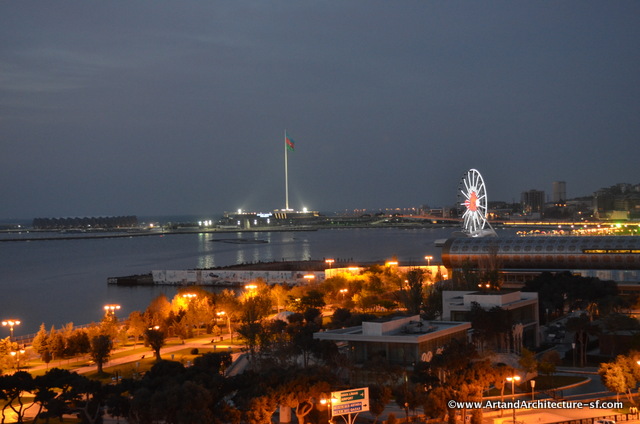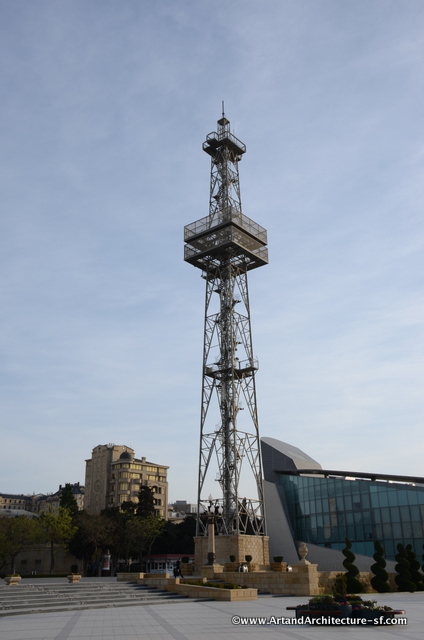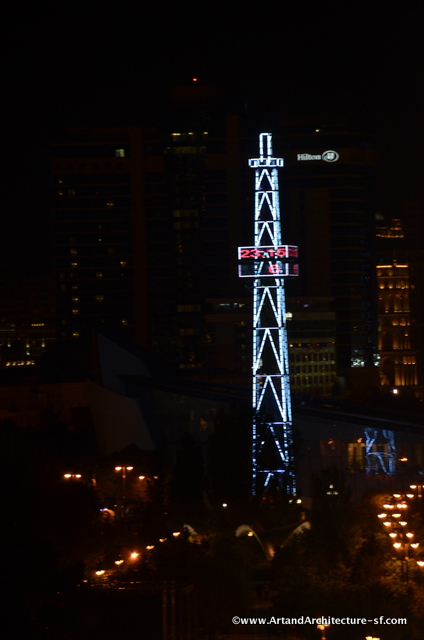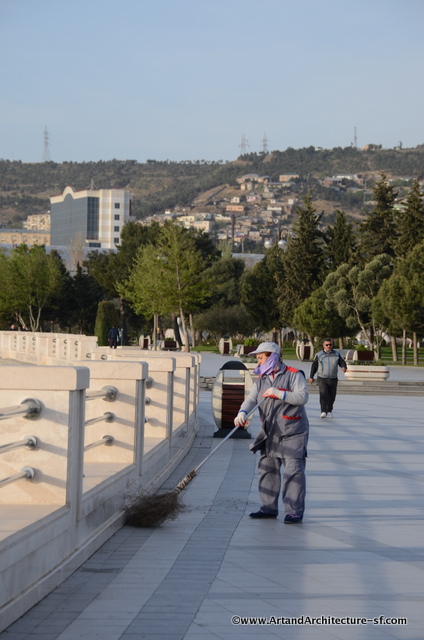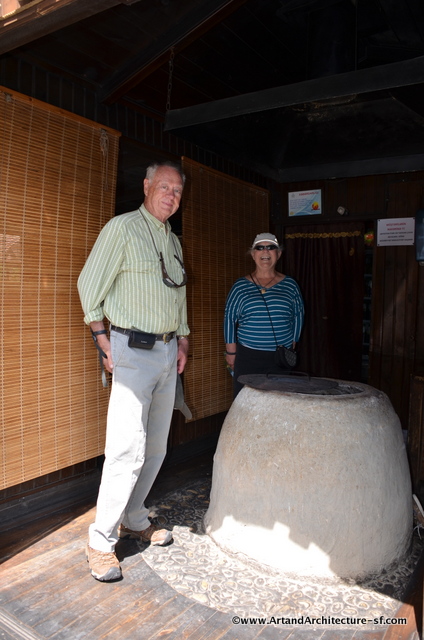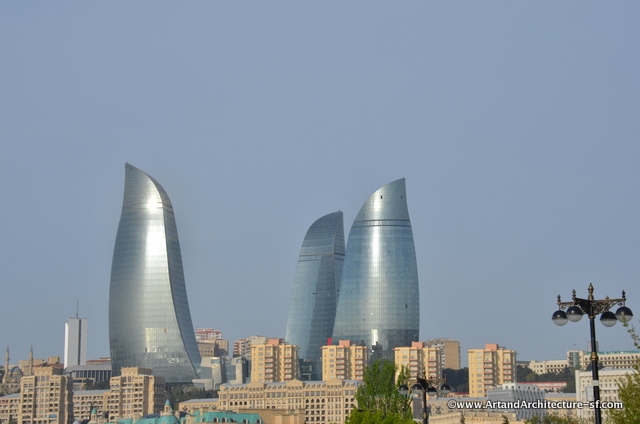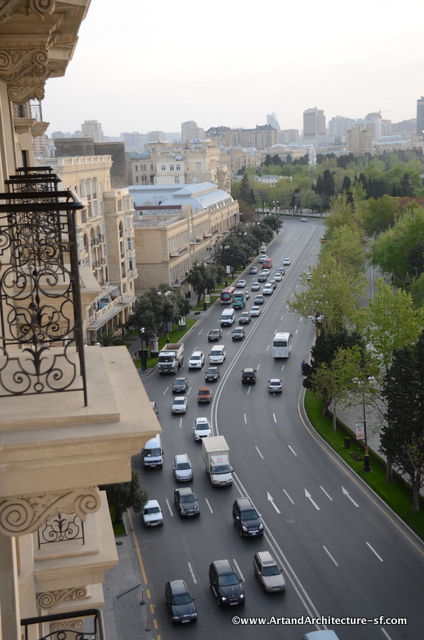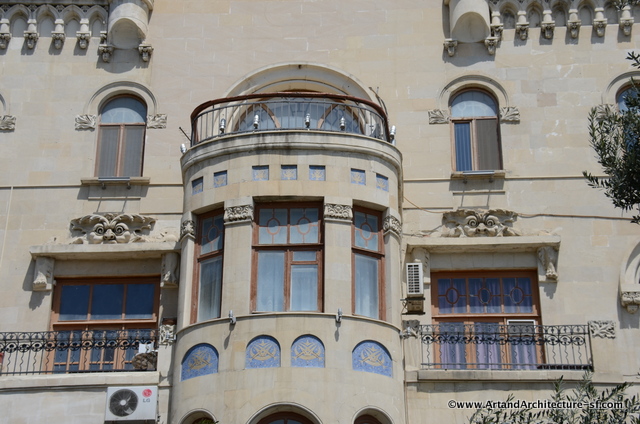I arrived at 9:30 last night April 29th, 2014 after leaving San Francisco at 3:00 April 28th. Flights like that make one know that people circumnavigating the world before the age of jets must have been a very special breed of human.
I woke to this view of the Caspian Sea.
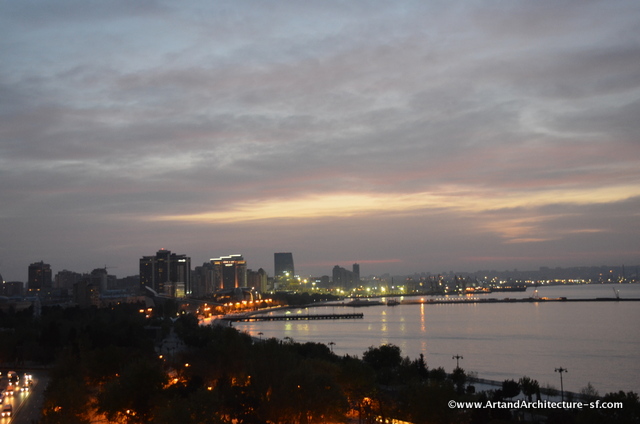 The day began with a walk down Baku Boulevard, also known as National Park. It is a promenade established in 1909 and runs parallel to the waterfront. Its history goes back more than 100 years, to a time when Baku oil barons built their mansions along the Caspian shore.
The day began with a walk down Baku Boulevard, also known as National Park. It is a promenade established in 1909 and runs parallel to the waterfront. Its history goes back more than 100 years, to a time when Baku oil barons built their mansions along the Caspian shore.
As early as the 15th century, Baku was an important international trading center for merchants traveling between the East and Europe. Caravans of camels and merchant ships transported oil, salt, plant dyes, and saffron. In the 19th century, the rapid growth of the oil industry caused a total modernization. By the turn of the 20th century, Baku was one of the biggest industrial cities in the world, and today it is the largest city in Azerbaijan.
In fact, the oil wells drilled in 1846 at Bibiheybat in the Baku region were the first mechanically-drilled oil wells in the world, an important technical innovation. It is worth pointing out that the USA, the world’s first oil producer, started using this mechanical-drilling method 13 years after Baku.
We know we are going to visit the important sites of the old town of Baku in the next few days so we thought we would take the opportunity to just wander. It was odd, we felt we had walked into a ghost town. The old town is walled, and yet we saw no people to speak of. It was obviously inhabited, and along the outside walls there are people, but deep in the interior, we found no one.
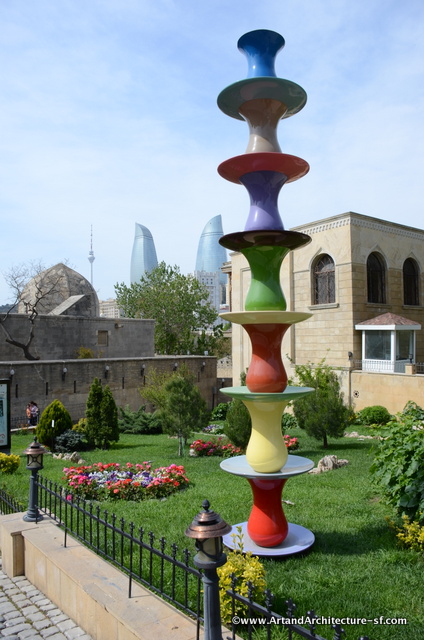 I did find lots of great public art, however. This is a stack of Armudu, Azerbaijan tea cups called the Twelve Beauties.
I did find lots of great public art, however. This is a stack of Armudu, Azerbaijan tea cups called the Twelve Beauties.
 The Inner Walled City is one of the few surviving medieval towns in Azerbaijan. It retains the characteristic features of a medieval town, such as the labyrinth of narrow streets, congested buildings, and tiny courtyards. The walls of the old town, which still survive on the western and northern sides, were built by Menutsshochr Shah in the 12th century and were repaired in the 19th century. In fact, there have been many repairs on the walls and archaeological exploration within the old town itself are still occurring. The narrow streets are lined with houses dating from the late 18th century onwards.
The Inner Walled City is one of the few surviving medieval towns in Azerbaijan. It retains the characteristic features of a medieval town, such as the labyrinth of narrow streets, congested buildings, and tiny courtyards. The walls of the old town, which still survive on the western and northern sides, were built by Menutsshochr Shah in the 12th century and were repaired in the 19th century. In fact, there have been many repairs on the walls and archaeological exploration within the old town itself are still occurring. The narrow streets are lined with houses dating from the late 18th century onwards.
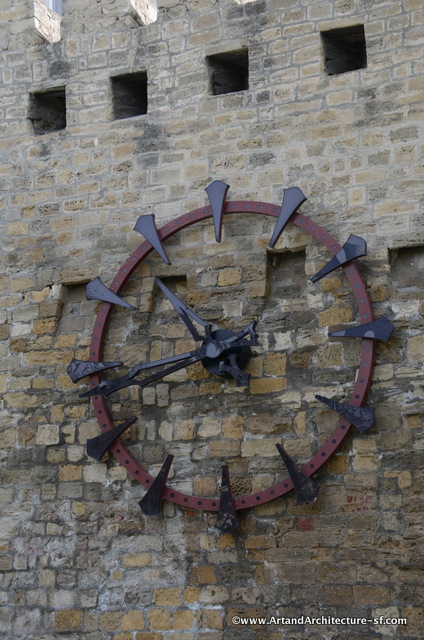 We had been told by the concierge to go to one of the three restaurants that bake the Azerbaijan bread as you order it, so that was our morning snack with tea.
We had been told by the concierge to go to one of the three restaurants that bake the Azerbaijan bread as you order it, so that was our morning snack with tea.
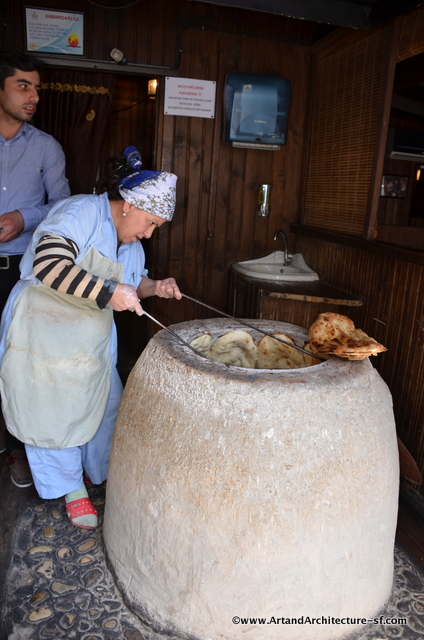 Notice how HUGE the loaves of bread are, I am pretty sure we left at least 1/3 of our loaf behind. Oh, and by the way it was 1 Manat which is equal to about $1.28
Notice how HUGE the loaves of bread are, I am pretty sure we left at least 1/3 of our loaf behind. Oh, and by the way it was 1 Manat which is equal to about $1.28
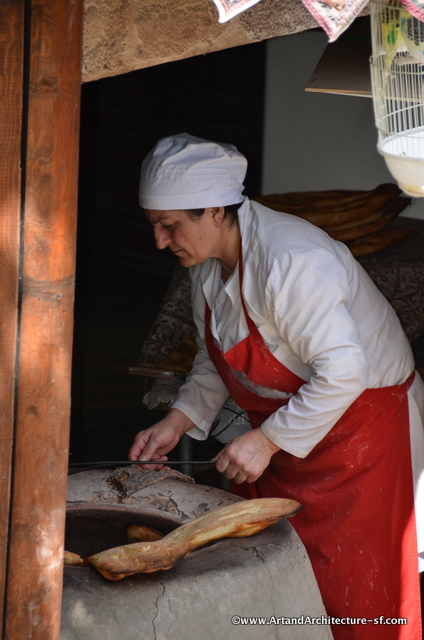
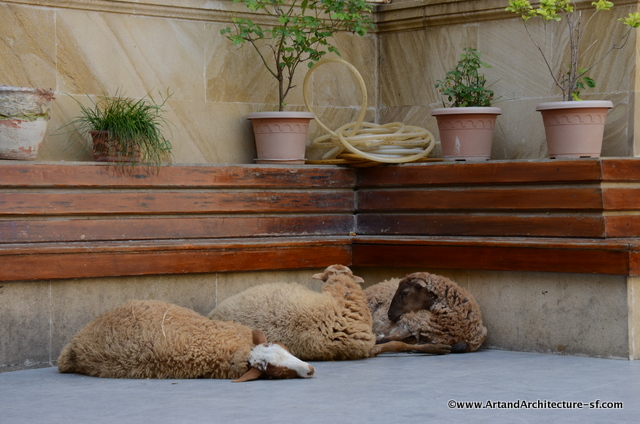 We have no idea why these three sheep were lazing in this little alcove, but we thought them rather cute. Possibly tonight’s dinner?
We have no idea why these three sheep were lazing in this little alcove, but we thought them rather cute. Possibly tonight’s dinner?
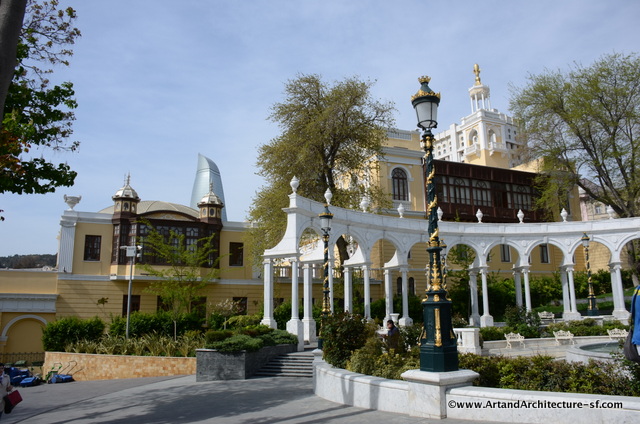 Azerbaijan is truly where East meets Europe and where Russia intruded itself for a while. The architecture just makes your jaw drop. There will be European Palaces built for the original oil barons, and then Persian Architecture, and then a Russian style housing project left from the 1960s. However, the new economy is attracting a new and highly modern type of architecture, that actually works. Some of the modern structures are a tad flashy, but many are a lovely addition to the skyline.
Azerbaijan is truly where East meets Europe and where Russia intruded itself for a while. The architecture just makes your jaw drop. There will be European Palaces built for the original oil barons, and then Persian Architecture, and then a Russian style housing project left from the 1960s. However, the new economy is attracting a new and highly modern type of architecture, that actually works. Some of the modern structures are a tad flashy, but many are a lovely addition to the skyline.
A few last thoughts. The people here and their language are called Azeri.
